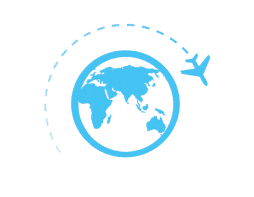Latin America
Latin America is a region that is difficult to define. It is sometimes considered a geographic region that includes the entire Caribbean, i.e., all Western Hemisphere countries south of the United States, regardless of language spoken. It is defined by others as a region where a Romance language (Spanish, Portuguese, or French) predominates, or as the countries with a history of Iberian (Spanish and Portuguese) colonialism.
The most limited definition, and the one utilized in this article, defines Latin America as countries where Spanish or Portuguese is currently the dominant language. Thus, not included are the islands of Haiti and the French Caribbean, the Anglophone Caribbean (including Jamaica and Trinidad), the mainland English-speaking countries of Belize and Guyana, and the Dutch-speaking countries of the hemisphere (Suriname, Aruba, and the Netherland Antilles).
Brief History
Before the arrival of Christopher Columbus in 1492, Latin America had been settled for millennia by a wide range of indigenous groups, some of whom (Aztecs, Mayans, Incas) boasted advanced civilizations. The Spanish were the first Europeans to arrive in the Americas, followed soon after by the Portuguese, who colonized Brazil. Landing first in the Caribbean, the Spanish soon expanded their explorations and conquest to Central America, Mexico, and South America.
The majority of Latin America gained independence from Spain between 1810 and 1825, with Brazil gaining independence from Portugal in 1825. Of Spain’s two remaining colonies, Cuba gained its independence in 1898, at which time Spain ceded Puerto Rico to the U.S. in the Treaty of Paris that ended the Spanish-American War.
Latin American Countries
Latin America is divided up into several regions: North America, Central America, South America, and the Caribbean.
North America
Mexico
Despite being the only North American country that is part of Latin America, Mexico is one of the region’s largest and most important nations. Mexico is the largest source not only of Latin American immigrants, but of all immigrants to the U.S.
Central America
Central America is comprised of seven countries, six of which are Spanish-speaking.
Costa Rica
Costa Rica is located between Nicaragua and Panama. It is one of the most stable countries in Central America, primarily because it has been able to capitalize on its rich topography for its ecotourism industry.
El Salvador
El Salvador is the smallest but most densely populated country in Central America. Along with Guatemala and Honduras, the country belongs to the maligned “Northern Triangle,” known for its violence and crime that is in large part a result of the civil wars of the 1980s.
Guatemala
Central America’s most populous country by far, as well as its most linguistically diverse, is Guatemala, known for the richness of its Mayan culture. Around 40% of the population speaks an indigenous language as their mother tongue.
Honduras
Honduras borders Guatemala, Nicaragua, and El Salvador. It is sadly known as one of Latin America’s poorest (66% of people live in poverty) and most violent countries.
Nicaragua
Central America’s largest country in terms of surface area is Nicaragua. It is also the poorestcountry in Central America and the second poorest in the region.
Panama
Panama, the southernmost country in Central America, has historically had a very close relationship with the U.S., particularly because of the history of the Panama Canal.
South America
South America is home to 12 independent nations, 10 of which are Spanish- or Portuguese-speaking.
Argentina
Argentina is South America’s second largest and third most populous country, after Brazil and Colombia. It’s also Latin America’s second biggest economy.
Bolivia
Bolivia is one of South America’s highland countries, known for its mountainous geography. It has a relatively large indigenous population, specifically Aymara and Quechua speakers.
Brazil
South America’s largest country in both population and physical size, Brazil is also one of the world’s most dominant economies. It covers almost half the land mass of South America and is home to the Amazon Rainforest.
Chile
Known for its prosperity relative to the rest of Latin America, Chile also has a whiter population with a smaller proportion of racially mixed people than most of the region.
Colombia
Colombia is South America’s second largest nation, and third largest in all of Latin America. The country is rich in natural resources, particularly petroleum, nickel, iron ore, natural gas, coal, and gold.
Ecuador
Although it is a medium-sized country within South America, Ecuador is the continent’s most densely populated nation. It is located along the Earth’s equator.
Paraguay
The small nation of Paraguay has a relatively homogenous population: most people are of mixed European and Guaraní (indigenous) ancestry.
Peru
Known for its ancient history and Incan Empire, Peru is the fourth most populous country in South America and the fifth in Latin America. It is known for its mountainous topography and relatively large indigenous population.
Uruguay
Uruguay is South America’s third smallest country, and, like neighboring Argentina, has a population that is largely of European descent (88%).
Venezuela
With a long coastline on the northern border of South America, Venezuela has much in common culturally with its Caribbean neighbors. It is the birthplace of the “liberator” of South America, Simon Bolivar.
The Caribbean
The Caribbean is the sub-region with the most diverse history of European colonization: Spanish, French, English, Dutch, and Kreyol are all spoken. Only the Spanish-speaking countries will be discussed in this article.
Cuba
The last Spanish colony to gain its independence, Cuba is the largest and most populous nation in the Caribbean. Like the Dominican Republic and Puerto Rico, the indigenous population was virtually eliminated in Cuba, and the primary type of racial mixture was between Africans and Europeans.
Dominican Republic
The Dominican Republic comprises the eastern two-thirds of what Spanish colonizers named the island of Hispaniola, and it has historically had a tense relationship with the western third of the island, Haiti. Culturally and linguistically, the Dominican Republic has much in common with Cuba and Puerto Rico.
Puerto Rico
The small island of Puerto Rico is a commonwealth of the U.S., although there has been a consistent debate throughout the past century about whether to continue with this status or to pursue statehood or independence. Since 1917, Puerto Ricans have been granted automatic U.S. citizenship, yet they don’t have the right to vote in presidential elections.



Post Discussion